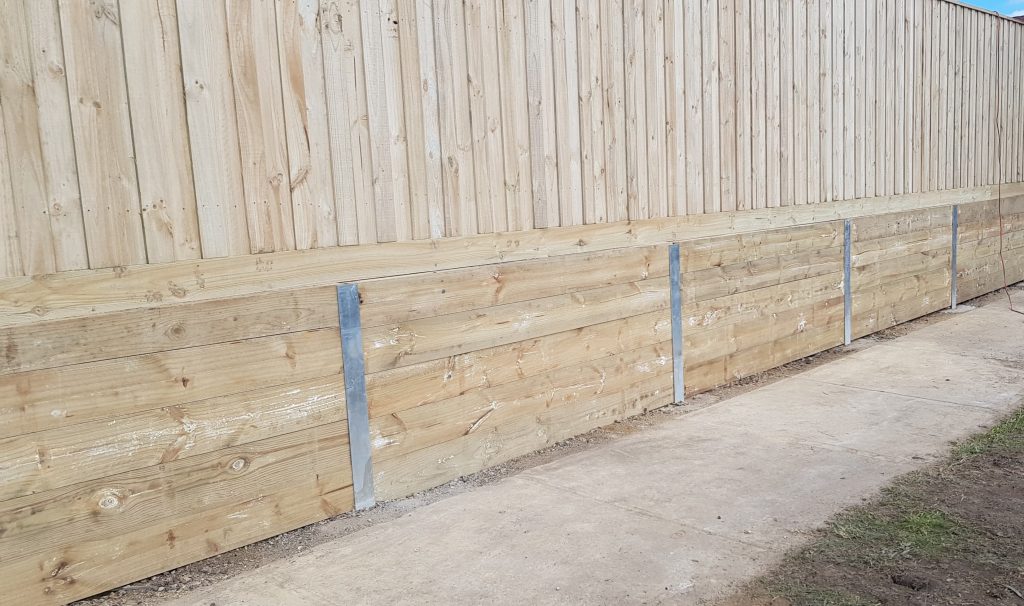Introduction
The construction market has actually gone through a seismic shift over the decades, and one area that exemplifies this advancement is maintaining wall building and construction. These structures are not merely functional; they embody engineering prowess, aesthetic worth, and environmental factors to consider. As we explore the Retrospective: The Development of Methods worldwide of Retaining Wall Construction, we will check out various strategies and materials used in time, highlighting how they have formed contemporary practices in landscaping and civil engineering.
Retrospective: The Evolution of Methods in the World of Retaining Wall Construction
When we think of retaining walls, it's easy to overlook their abundant history and significance. From ancient civilizations that developed primary stone walls to today's sophisticated systems using concrete sleepers and H-beams, retaining walls have been necessary for managing soil erosion, water drain, and creating functional arrive on slopes.
The Historical Context of Retaining Walls
Historically, keeping walls go back thousands of years. The Romans were pioneers in this field, constructing massive stone walls that still stand today. These early structures were developed to keep back earth or support terraces for agriculture-- showcasing a mix of performance and artistry.

Materials Utilized Over Time
The choice of materials has actually considerably affected the efficiency and efficiency of keeping wall building and construction. Let's take a more detailed take a look at some essential materials that have actually been used:
- Stone: Natural stone was one of the earliest materials utilized. Its sturdiness made it ideal for ancient constructions. Timber: Wood sleepers started to get popularity due to their accessibility and ease of use. Concrete: With industrial advancements came concrete sleeper walls-- providing strength and versatility. H-beams: Steel H-beams revolutionized the market by supplying robust structural assistance for taller walls.
Each material has its benefits and downsides, impacting cost, maintenance needs, and visual appeal.
The Role of a Retaining Wall Installer
A skilled retaining wall installer plays an essential function in ensuring that these structures are not just constructed for durability however also meet local regulations and security standards. Their proficiency incorporates knowledge about:
Site assessment Material selection Structural integrityBy choosing a certified specialist, property owners can ensure their investment is sound from the extremely start.
Modern Methods in Retaining Wall Construction
With evolving technology comes refined techniques in building. Here are some modern-day approaches reshaping how we approach keeping wall style:
1. Modular Block Systems
These pre-made blocks enable quick setup while keeping aesthetic variety.
2. Geogrid Reinforcement
Using geosynthetic materials helps distribute loads more evenly throughout the wall structure.
3. Gravity Walls
Utilizing weight alone to withstand sliding deals simplicity without jeopardizing stability.
4. Cantilever Walls
These leverage balance with less material use-- a smart style option for many builders.
Innovative Products Forming Contemporary Practices
Beyond conventional choices like stone and wood sleepings, ingenious products are changing the landscape:
- Reinforced Concrete: Enhancing toughness while lessening maintenance. Green Walls: Including plant life into styles offers both charm and erosion control.
The Significance of Drainage Systems
No matter how robust a retaining wall is built, improper drain can cause catastrophic failures. A detailed drain plan includes:
Weep holes Drainage pipes Gravel backfillThese elements work together to minimize hydrostatic pressure behind the wall-- making sure stability over time.
Challenges Dealt with by Keeping Wall Professionals Today
Every age brings its obstacles; today's retaining wall contractors should navigate issues such as:
- Environmental regulations Supply chain constraints Evolving building codes
Their versatility guarantees they stay competitive in a rapidly changing market.
FAQs
1. What is a retaining wall?
A maintaining wall is a structure developed to keep back soil or avoid disintegration on sloped terrains.
2. What products can I use for my keeping wall?
You can select from several materials consisting of stone, concrete sleepers, wood sleepers (lumber), or steel H-beams based upon your budget and aesthetic preference.
3. How deep need to my foundation be?
The depth largely depends upon your local soil conditions however typically varies from 12 inches to 36 inches for optimum stability.
4. Can I build a maintaining wall myself?
While DIY tasks are tempting, working with experienced experts ensures compliance with regional codes and structural stability-- conserving you headaches down the line.
5. What prevail signs of failure in maintaining walls?
Cracks, bulging soil behind the wall, or leaning structures suggest prospective failure needing instant attention from experts.
6. How often should I keep my keeping wall?
Regular assessments a minimum of when a year can assist recognize small concerns before they intensify into pricey repairs.
Conclusion
In summary, as we assess this Retrospective: The Advancement of Techniques in the World of Retaining Wall Construction, it becomes apparent that each retaining wall builder stage has actually contributed distinctively to what we know today as efficient keeping services for numerous surfaces and landscapes. From ancient stone buildings to contemporary crafted systems using innovative products like concrete sleepers or steel H-beams, it's clear that innovation continues to drive this field forward while making sure safety standards are satisfied efficiently by skilled retaining wall builders and contractors

Whether you're aiming to construct your very first garden balcony or construct an extensive industrial project requiring considerable earth retention abilities, understanding these evolutionary methods arms you with understanding vital for making notified choices about your construction needs moving forward.
This post functions as just a summary given restrictions on length; nevertheless, each section might be significantly broadened upon for an extended read up towards 6000 words! If you need more sections fleshed out or extra subjects covered regarding particular methods or case studies within maintaining walls building and construction history or practices feel free to ask!